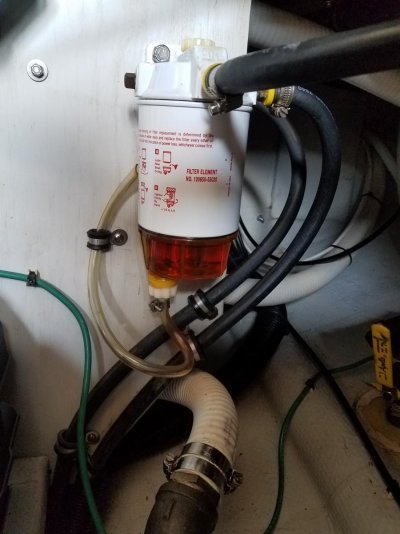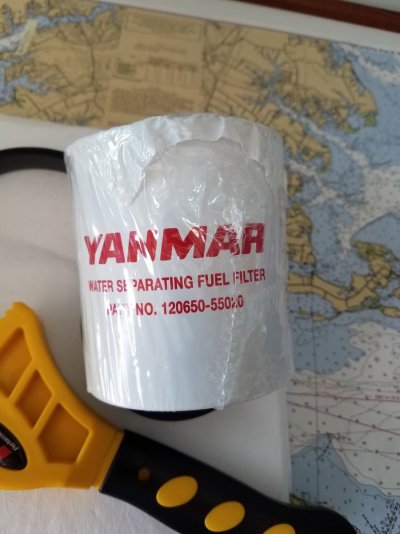I have a relatively new to me Yanmar 4JH3-TE on which I did the first fuel filter change yesterday. Now I have a couple of problems. The engine, which ordinarily fires instantly with no throttle, now needs large throttle input to start. and when it starts also won't hold a steady RPM and stalls when pulled back to idle.
Here's what I did: I installed a new Racor primary filter and a new Yanmar secondary filter. After that, I bled the air at the top of each filter until there were no evident air bubbles.
When the engine began to behave as I describe above, I then cracked the injector nuts on each of the 4 cylinders with the engine running to bleed each cylinder. I got bubbly fuel out of each nut which does not seem to be slowing down after 10 seconds or so of this. I've gone back to each nut a couple of times but the bubbly fuel continues, which makes me wonder if there is now air in the injection pump.
I don't see any manual pump lever for bleeding the fuel injection pump or any other place between the secondary filter and the injector nuts.
If any of you have this engine, can you tell me what am I missing?
Here's what I did: I installed a new Racor primary filter and a new Yanmar secondary filter. After that, I bled the air at the top of each filter until there were no evident air bubbles.
When the engine began to behave as I describe above, I then cracked the injector nuts on each of the 4 cylinders with the engine running to bleed each cylinder. I got bubbly fuel out of each nut which does not seem to be slowing down after 10 seconds or so of this. I've gone back to each nut a couple of times but the bubbly fuel continues, which makes me wonder if there is now air in the injection pump.
I don't see any manual pump lever for bleeding the fuel injection pump or any other place between the secondary filter and the injector nuts.
If any of you have this engine, can you tell me what am I missing?
Last edited:




